The video game sector’s woes continue. The news of layoffs, shutdowns, AAA game title delays were added to by the news from both Sony and Nintendo that reported lower than expected sales and lowered forecasts for the coming year. While the shortfalls had been previously expected by DFC, the new results have resulted in DFC Intelligence lowering its 2024 and 2025 forecasts for console games.
This news highlights DFC Intelligence’s assertion that the game industry is going through its greatest paradigm shift ever. This is going to be tough on established players, especially those that rely on the PlayStation platform. The good news is that it presents new opportunities for those savvy enough to understand where the market is headed.
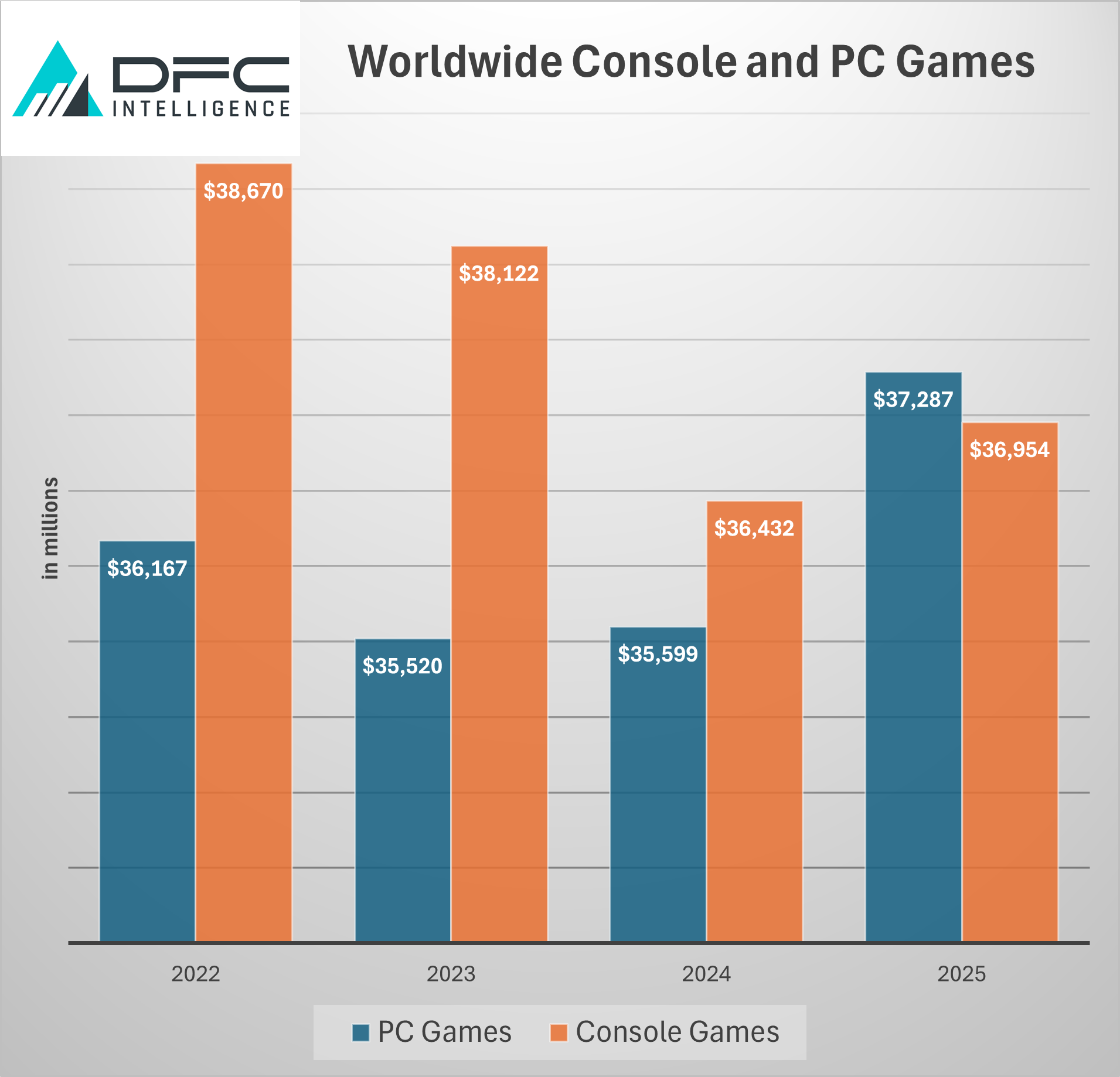
In the short-term, two factors hurting the aggregate industry sales are 1) the end of life for the Nintendo Switch and 2) significantly lower than expected sales of the PlayStation 5. Nintendo’s issues should be resolved in 2025 with the launch of a new console, but Sony’s issues are more concerning over the long-term.
In early 2023, DFC Intelligence forecast that PlayStation 5 would sell 21 million units in 2023 which was significantly lower than Sony’s forecast of 25 million units. In early 2024, Sony lowered the forecast to 21 million for fiscal 2023 and the final number came in at 20.8 million.
One could say that selling 21 million console units to be a solid effort and one that Xbox could only dream of, but it doesn’t escape the fact that the company significantly missed its target. Sony now expects sales of only 18 million units in fiscal 2024 and is saying “As we enter the second half of the console cycle, we expect the number of new PS5 units sold to gradually decline.” So Sony is seeing a decline four years after launch, a time when Nintendo was seeing record Switch sales.
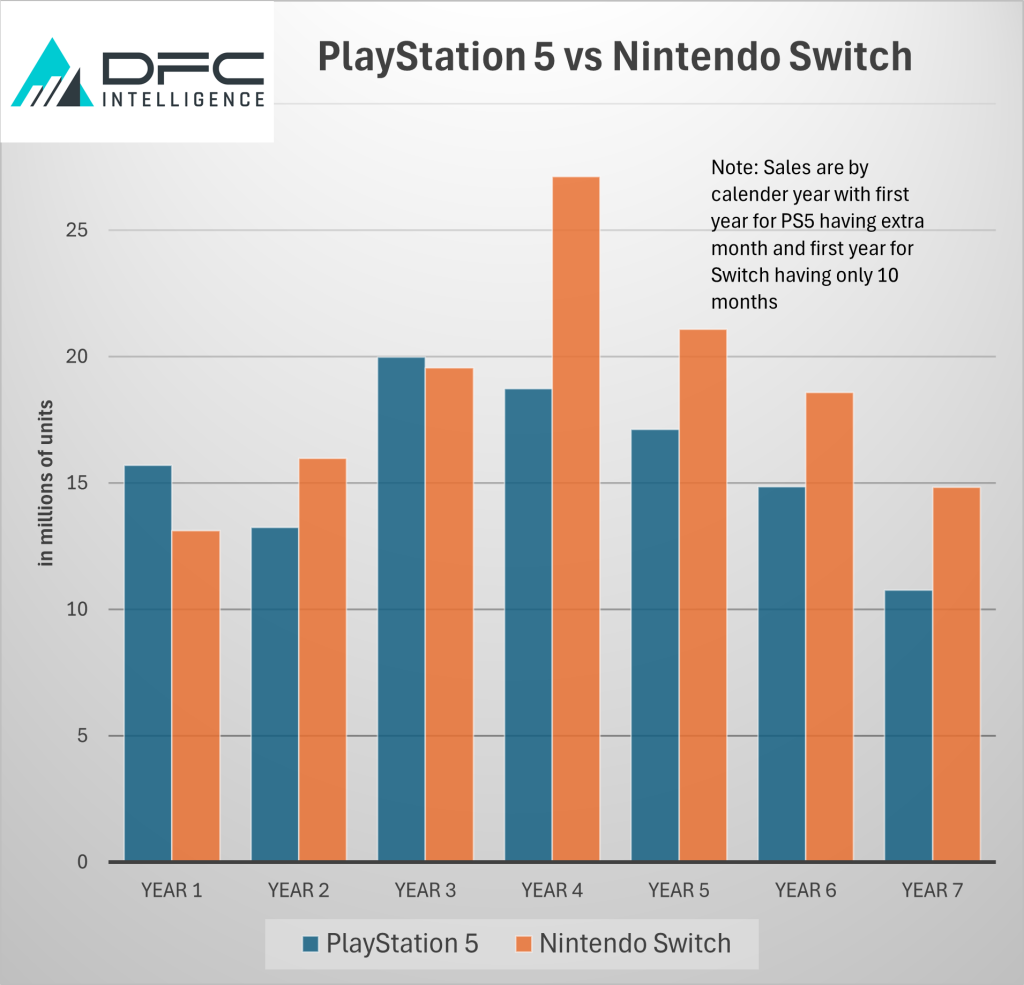
The Sony PlayStation platform is a major driver for the video game industry. For example, in the Apple versus Epic court case over Apple royalties it was revealed that nearly half of revenue for Fortnite was from PlayStation 4, with only about 7% from Apple iOS. Call of Duty, now owned by Microsoft, regularly generated over $1 billion annually on PlayStation platforms. In other words, companies rely on a solid Sony installed base to generate revenue.
What seems clear from Sony’s latest earnings report is that they are planning a significant overhaul of the PlayStation platform business model. With new management and a new organization structure, Sony is going through major changes. This includes running the hardware division and software division under separate management. Subtle indications now seem to be that Sony will look to phase the PlayStation 5 out sooner rather than later.
The strategy shift makes sense for Sony and its investors. However, it is likely to cause some short-term pain for third party companies that rely on Sony platforms for revenue. In fiscal 2023 the Sony PlayStation Store sold ¥1,935 billion in digital software (it is hard to convert to dollars with fluctuating exchange rates but that is about $15 billion). Based on Sony’s financial report an estimated 85% of that revenue was from third party software.
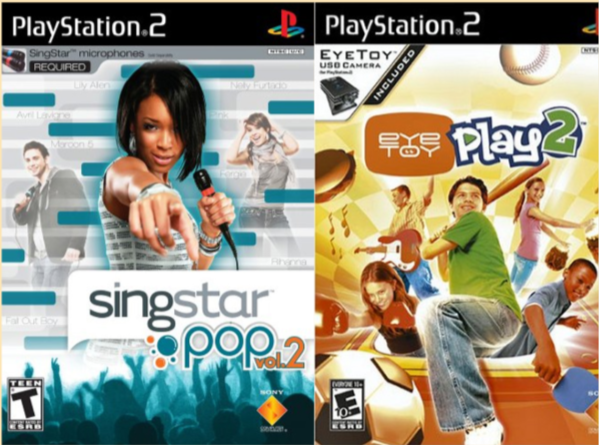
Another problem for Sony has been its failure to expand the PlayStation brand to a larger audience. They have focused on the high-end consumer that leans towards heavy action games like the Call of Duty franchise which stands in contrast to not only Nintendo, but Sony’s original plan with the PlayStation 2. The PlayStation 2 was one of the best-selling hardware systems of all-time because it focused on both core gamers and a mass audience that went for products like SingStar and EyeToy. DFC considers this pivot in strategy to be a significant issue in the company’s inability to increase its core user base. Even as the video game industry has soared, the PlayStation base remains below the peak of PlayStation 2.
Sony stopped reporting PlayStation Plus subscribers, mainly because the number had stagnated and was actually going down in recent quarters. Instead, Sony is now only reporting the number of monthly active users for PlayStation which is a somewhat dubious number that is more easily manipulated. In the February release of Helldivers 2, Sony was going to require users to register a PlayStation network account. After an outcry over this policy Sony backed away from this requirement but it is an example of efforts to tweak MAU numbers for investors.
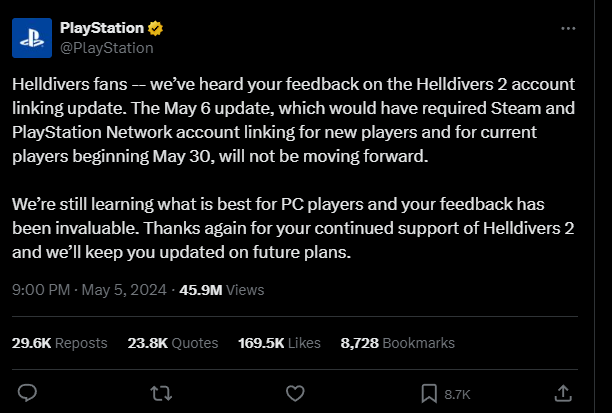
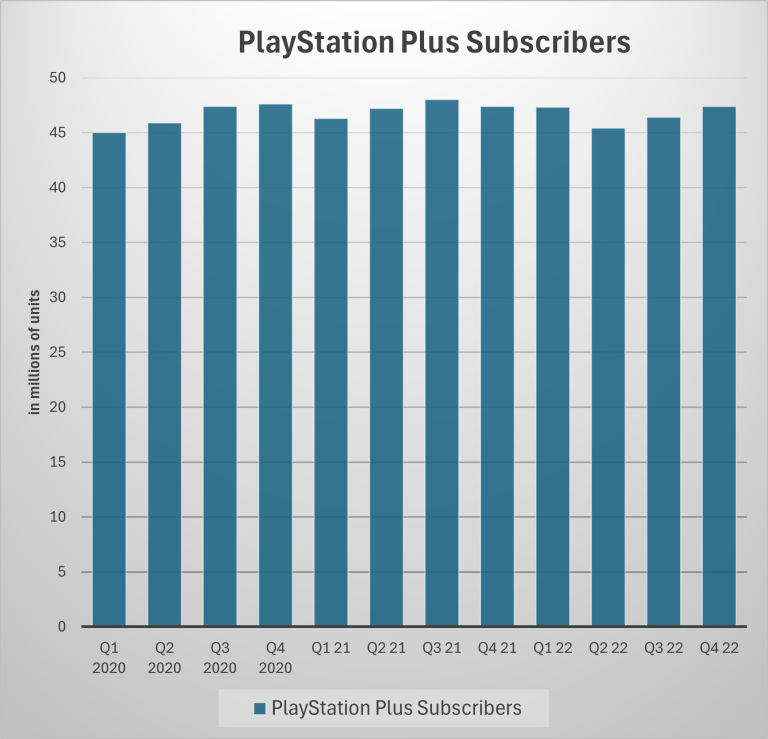
Sony’s Helldivers 2 also works as an example of a major flaw in Sony’s current strategy. Sony reported the following last week in its financial results.
“the live service game Helldivers 2, released in February, has been a hit that far exceeded expectations, with cumulative sales for both PS5 and PC in the 12 weeks since its release to the beginning of May reaching 12 million copies, surpassing the record set by God of War Ragnarök in the same period after its release in 2022. The game has become our biggest PC hit title to date, and as a multi-platform title, it also contributed significantly to sales and profit last quarter.“
On the surface this is positive news both for Sony and for showing strong consumer demand. But it also begs the question why Helldivers 2 is outselling the highly reviewed and much anticipated Marvel’s Spider-Man 2 which according to Sony reports sold 10 million units from its release in October 2023 to the end of the fiscal year this past March.
If Spider-Man 2 had been published and marketed by Nintendo for the Switch it probably would have sold twice as many units. This is why Sony is looking to change its business model to more closely that of Nintendo, a more profitable system where the focus is on more revenue per user versus growing the user base.

Under the Nintendo model, the ratio of first-party Nintendo software sales to third-party sales is almost reverse what it is for PlayStation with as much as 80% of Switch revenue coming from Nintendo first-party products. Unlike Sony, not many large publishers rely heavily on Nintendo platforms.
From Sony’s perspective it makes a great deal of sense to overhaul its business model. Sony needs to focus on 1) building its already excellent software development capabilities and 2) becoming more of a software publishing and marketing power. Sony releases great titles, but compared to the marketing savvy of Nintendo, their products significantly underperform.
In the coming weeks, DFC will be talking more about the shift in Sony’s strategy and what it means for the industry. We will also be looking closely at Microsoft’s evolving strategy post-acquisition.
Current DFC Intelligence forecasts include a new system from Nintendo launching in 2025. Starting this summer DFC forecasts will also include new systems from Sony and Microsoft in forecasts looking at 2026 and beyond.

